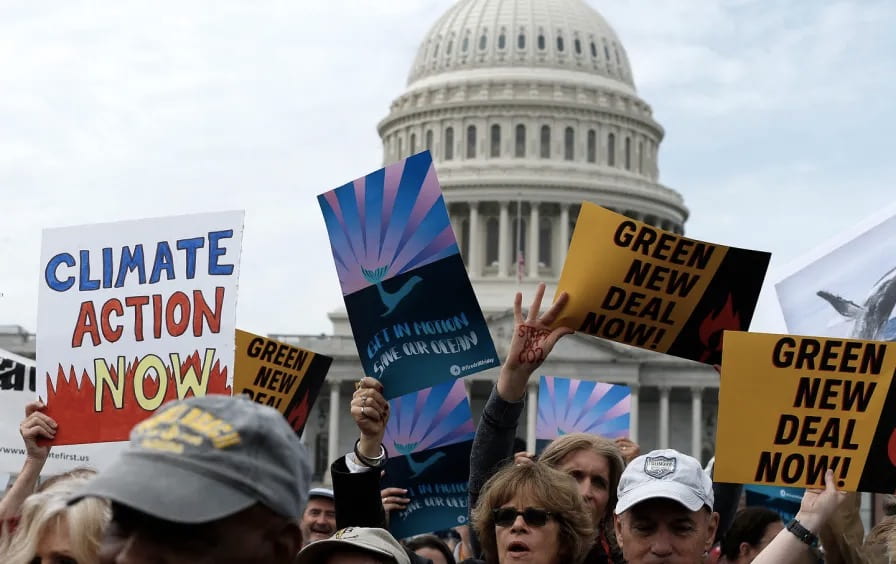
Photo: Demonstrators during a Fire Drill Friday climate change protest in October 2019. (John Lamparski / Getty Images). From The Nation online.
Two years ago the Green New Deal went down in flames.
In March 2019, two months after the Green New Deal resolution had been introduced into Congress, Republicans rushed a Senate vote, certain it would fail. And it did. 0-53. The Democrats voted “present” in protest.
A Green New Deal is unlikely to ever pass in the United States. Yet activists, authors, and think tanks have reorganized their campaigns around its principles and proposals. Even if it is legislatively dead, the Green New Deal’s political legacy is very much alive.
Biden, despite his refusal to support the plan during his campaign, is already pursuing an enormous infrastructure bill that aligns with the Green New Deal. The American Jobs Plan would devote over $2 trillion to revitalizing infrastructure, shifting towards clean energy, and creating good jobs, especially in marginalized communities.
In the tradition of President Franklin D. Roosevelt’s New Deal Era Civilian Conservation Corps, Biden also recently announced the Civilian Climate Corps initiative. Like its historical analog, the Civilian Climate Corps will create jobs through environmental protection programs. Though some activists are optimistic, many warn that Biden is still not doing enough.
As the Green New Deal framework continues to drive the climate action agenda in the United States, whether by that name or others, questions still remain. How has the Green New Deal reshaped climate solutions today? What are its legacies? With federal action stalled, what other actors are taking up the mantle of the Green New Deal vision? Who risks being left out? I plan to explore these questions, among others, as I report on the Green New Deal this term.